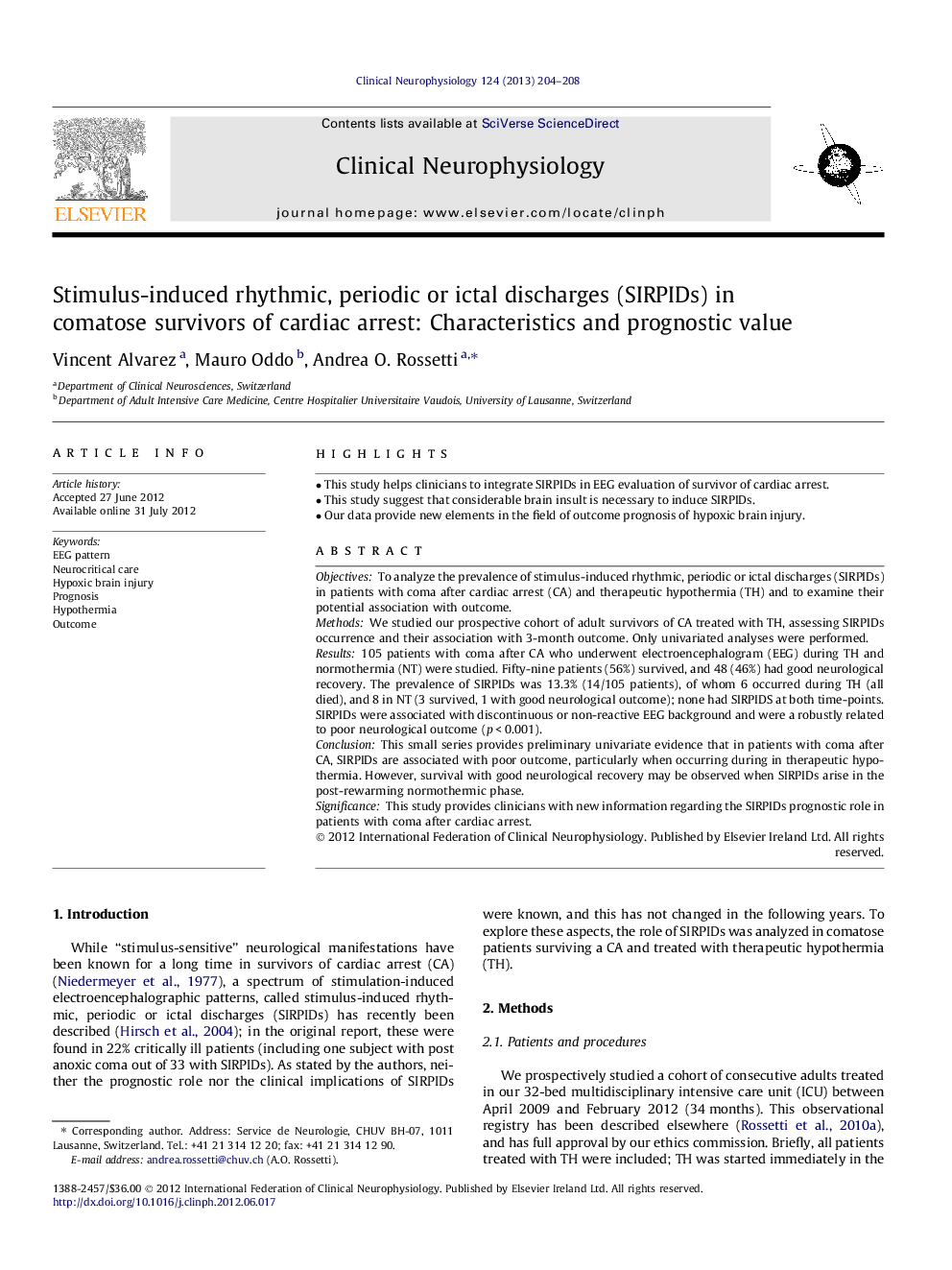| Article ID | Journal | Published Year | Pages | File Type |
|---|---|---|---|---|
| 3043052 | Clinical Neurophysiology | 2013 | 5 Pages |
ObjectivesTo analyze the prevalence of stimulus-induced rhythmic, periodic or ictal discharges (SIRPIDs) in patients with coma after cardiac arrest (CA) and therapeutic hypothermia (TH) and to examine their potential association with outcome.MethodsWe studied our prospective cohort of adult survivors of CA treated with TH, assessing SIRPIDs occurrence and their association with 3-month outcome. Only univariated analyses were performed.Results105 patients with coma after CA who underwent electroencephalogram (EEG) during TH and normothermia (NT) were studied. Fifty-nine patients (56%) survived, and 48 (46%) had good neurological recovery. The prevalence of SIRPIDs was 13.3% (14/105 patients), of whom 6 occurred during TH (all died), and 8 in NT (3 survived, 1 with good neurological outcome); none had SIRPIDs at both time-points. SIRPIDs were associated with discontinuous or non-reactive EEG background and were a robustly related to poor neurological outcome (p < 0.001).ConclusionThis small series provides preliminary univariate evidence that in patients with coma after CA, SIRPIDs are associated with poor outcome, particularly when occurring during in therapeutic hypothermia. However, survival with good neurological recovery may be observed when SIRPIDs arise in the post-rewarming normothermic phase.SignificanceThis study provides clinicians with new information regarding the SIRPIDs prognostic role in patients with coma after cardiac arrest.
► This study helps clinicians to integrate SIRPIDs in EEG evaluation of survivor of cardiac arrest. ► This study suggest that considerable brain insult is necessary to induce SIRPIDs. ► Our data provide new elements in the field of outcome prognosis of hypoxic brain injury.
